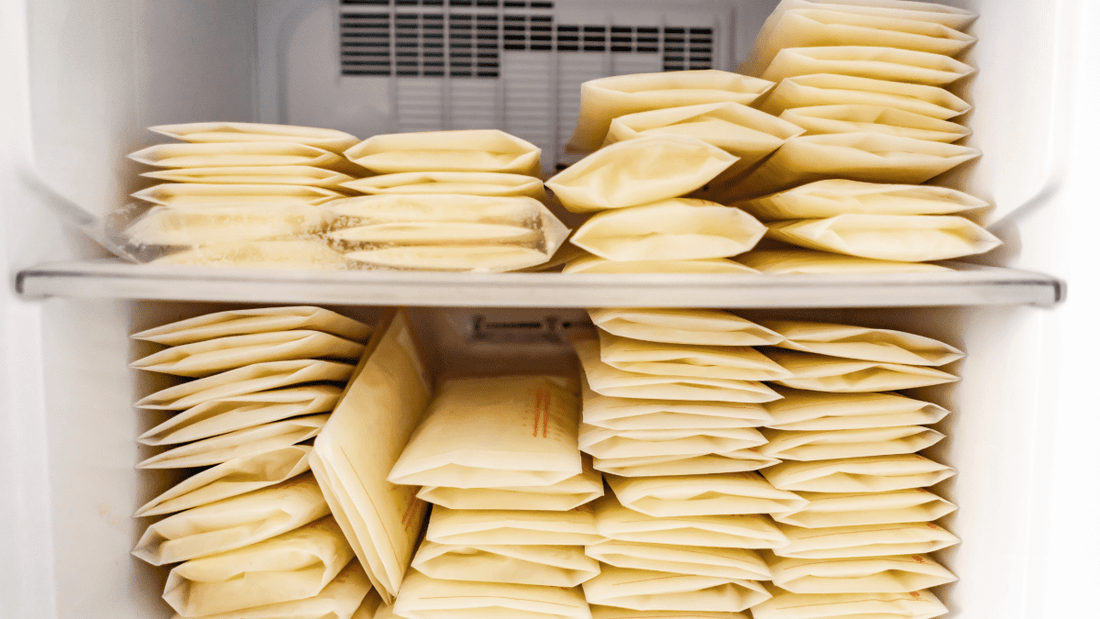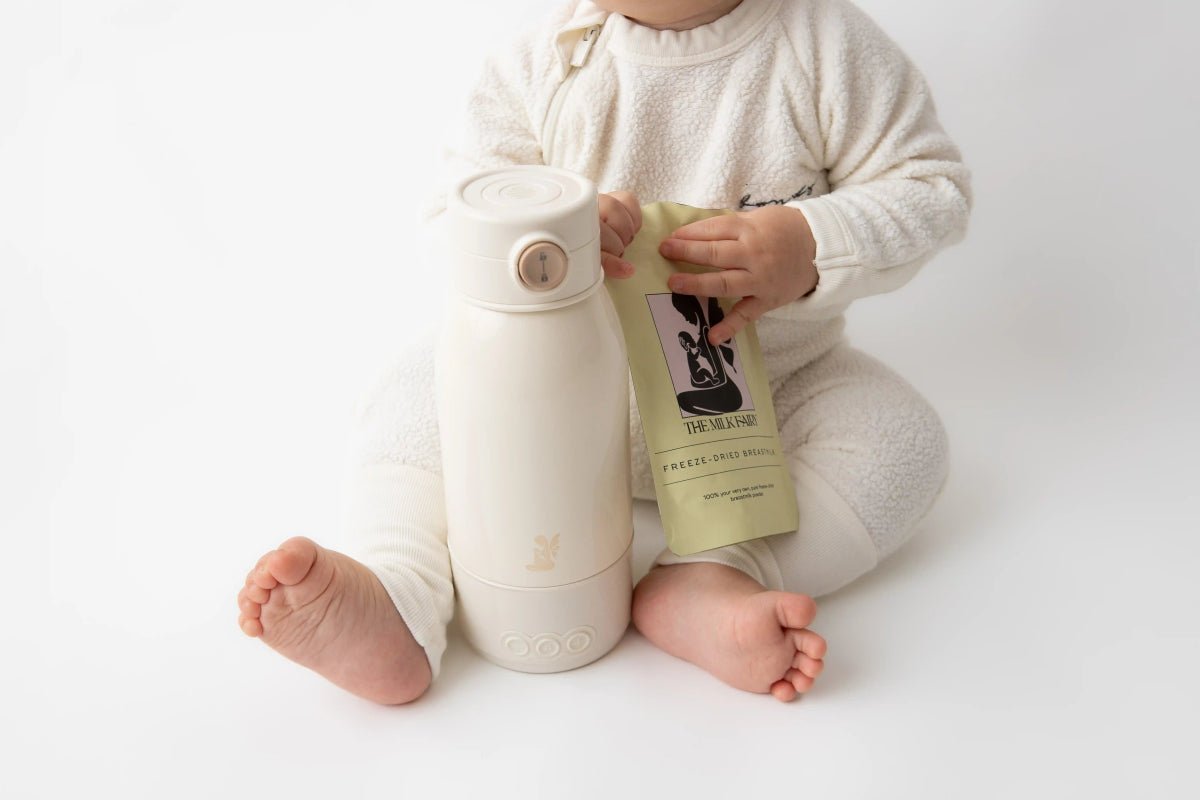
Travelling as a breastfeeding mum can be daunting, especially when it comes to storing and transporting your breast milk safely. Whether you're embarking on a weekend getaway, a business trip, or a family holiday, ensuring your "liquid gold" remains fresh and ready for your little one is paramount. Fortunately, with the right strategies, you can travel confidently, knowing your breast milk is safe and nutrient-rich.
1. Plan Ahead: Understand Airline Regulations
Before setting off, it's crucial to familiarise yourself with airline and security regulations regarding the transport of breast milk:
-
Domestic Flights within Australia: For domestic travel, there are no specific restrictions on the amount of expressed breast milk you can carry onboard.
-
International Flights: When flying internationally, breast milk is typically subject to liquid restrictions. You may only take expressed breast milk onboard an aircraft in your carry-on bag in containers of 100mL or less, with a total not exceeding 1 litre. It must be contained in a transparent, resealable plastic bag where the four sides add up to no more than 80cm (e.g., 20x20cm or 15x25cm). Expressed breast milk in larger volumes may be carried in a suitably insulated container in checked baggage, as there are no restrictions on powder, liquid, aerosol, or gel items for checked baggage.
2. Use Leak-Proof Storage Solutions
Investing in high-quality, leak-proof breast milk storage bags or BPA-free bottles is essential to prevent spills and contamination. Always double-bag your milk when flying, and store it in a separate compartment in your hand luggage to avoid accidental leaks onto your other belongings. If you're using bottles, ensure they have secure lids. Some mums even place bottles in a ziplock bag for extra protection.
3. Keeping Breast Milk Cool: Ice Packs and Dry Ice
Maintaining the appropriate temperature for your breast milk during travel is crucial:
-
Ice Packs: For shorter journeys, gel-based ice packs in an insulated cooler can keep breast milk cold for up to 24 hours. Ensure these packs are frozen solid at the time of screening to comply with security regulations.
-
Dry Ice: For extended trips, dry ice can be an effective solution to keep breast milk frozen. However, transporting dry ice requires careful planning:
-
Airline Approval: Most airlines permit passengers to carry a limited quantity of dry ice (typically up to 2.5 kg or 5.5 lbs) in carry-on or checked baggage. It's imperative to notify your airline in advance and obtain approval, as policies can vary.
-
Packaging and Labelling: Dry ice must be properly packaged in ventilated containers to allow the release of carbon dioxide gas. Additionally, packages containing dry ice should be clearly labelled to indicate the presence of dry ice and the net weight.
-
Safety Precautions: Handle dry ice with care, using insulated gloves to prevent cold burns. Ensure the storage area is well-ventilated to prevent the build-up of carbon dioxide gas.
-
Sourcing Dry Ice in Australia:
If you're considering using dry ice, here are some suppliers across Australia:
-
Dry Ice Australia: Supplies a wide range of dry ice products suitable for various needs.
-
BOC Gas: Offers dry ice available for pick-up or delivery.
-
Cold Jet Australia: Provides dry ice pellets and can deliver directly to your door.
-
Supagas: Offers dry ice pellets in various sizes, available for collection or delivery.
-
Dry Ice WA: Supplies high-density, food-grade dry ice pellets throughout Western Australia.
Remember to contact suppliers in advance to confirm availability and any specific requirements.
4. Pumping on the Go: Be Prepared
If you need to express milk while travelling, bring a battery-operated or manual breast pump for convenience. Many airports now have dedicated nursing rooms with power outlets, but if one isn’t available, a manual pump can be invaluable. Pack cleaning wipes and sterilising bags so you can quickly clean pump parts when access to hot water is limited.
5. Labelling and Storage
Always label your stored breast milk with the date and time it was expressed. If you’re storing milk in a shared fridge (e.g., at a hotel or friend’s house), add your name to avoid mix-ups. Familiarise yourself with breast milk storage guidelines to ensure your baby receives the best nutrition:
-
Room temperature: Up to 4 hours
-
Insulated cooler with ice packs: Up to 24 hours
-
Refrigerator: Up to 4 days
-
Freezer: Up to 6 months (or 12 months in a deep freezer)
If milk has been thawed, it should be used within 24 hours and never refrozen.
6. Consider Freeze-Drying: A Convenient Alternative
For the ultimate travel-friendly breast milk solution, consider freeze-drying your milk. Freeze-dried breast milk is lightweight, shelf-stable, and requires no refrigeration, making it an excellent option for mums on the move. Simply mix with warm water when needed, and it’s ready for feeding.
How We Can Help:
At The Milk Fairy, we specialise in freeze-drying breast milk, providing a convenient and safe solution for travelling mums. Our process preserves the nutritional integrity of your milk, ensuring your baby receives the best nourishment, wherever you are. Contact us today to learn more about our services and how we can support your breastfeeding journey.
Safe travels, mama! You’ve got this. 💛


